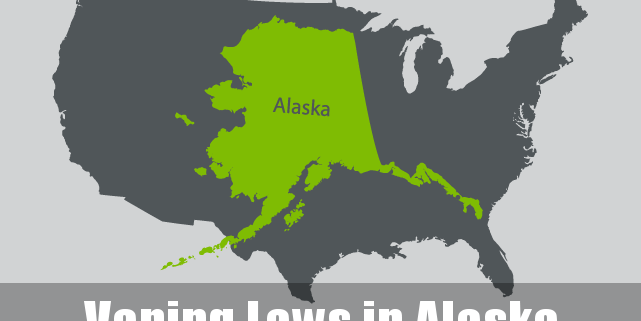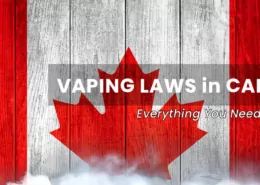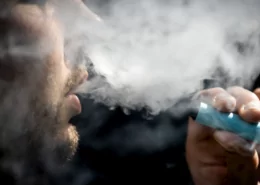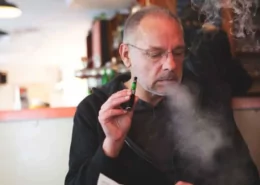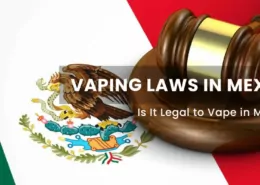Vaping Laws in Alaska – Is it Legal to Vape in Alaska?
Updated: May / 2025
A guide to Alaska’s 2025 e-cigarette regulations: Federal age 21 for sales, public use bans, no statewide flavor ban yet, local taxes, and proposed changes.
Alaska, “The Last Frontier,” presents a unique and evolving landscape for vaping regulations. Balancing public health concerns, especially regarding youth access, with adult consumer choices and the state’s distinct geographical challenges, Alaska’s approach to electronic smoking devices (ESDs) is shaped by a mix of state statutes, local ordinances, and overarching federal mandates. This guide provides a deep dive into Alaska’s vaping laws as of 2025, ensuring residents, visitors, and industry professionals understand the current rules.
Key Highlights of Alaska’s Vaping Laws
- Federal Age Prevails: While Alaska’s state law sets the minimum age for tobacco and vape product possession at 19, federal law mandates a minimum sales age of 21 for all tobacco and nicotine products, including e-cigarettes. Retailers must adhere to the stricter federal age.
- Public Use Restrictions: Alaska’s comprehensive Smokefree Alaska Law treats vaping largely the same as smoking, prohibiting e-cigarette use in most indoor public places and workplaces.
- Ongoing Legislative Evolution: Alaska’s legislature continues to consider measures to further regulate vaping, including aligning state age laws with federal standards and potentially introducing taxes on vaping products to deter youth use.
The Legal Framework: How Alaska Regulates Vaping
Alaska’s legal framework addresses vaping products with a distinct approach. Under Alaska Statute § 11.81.900(b)(23), electronic smoking products are defined as devices delivering substances via inhaled vapor or aerosol, covering e-cigarettes, vape pens, and related components. Notably, state law excludes these products from its formal definition of “tobacco products,” creating separate regulatory paths for traditional tobacco and ESDs. This distinction allows for targeted legislation, such as Alaska Statute § 18.35.399(4), which specifically prohibits vaping in smoke-free zones, irrespective of nicotine content. The regulatory environment also involves complex interactions between municipal, state, and federal authorities, with federal law often setting a higher bar for certain regulations like the minimum sales age.
Can I Vape in Alaska: Key Regulations to Know
If you are a consumer who vapes or is considering it in Alaska, understanding the rules around age and public use is paramount.
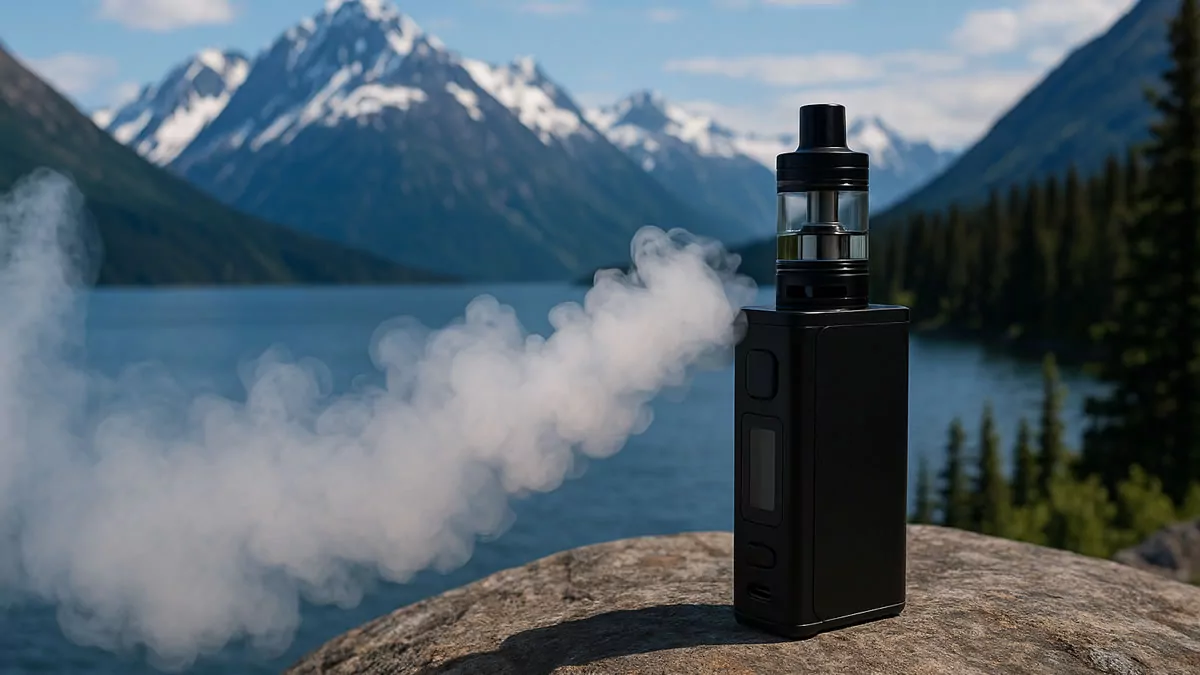
Age Restrictions: Federal Law Mandates 21+ for Sales
A critical aspect of vaping regulation in Alaska is the age restriction. While Alaska state law (specifically Alaska Statute § 11.76.105) sets a minimum age of 19 for the possession of electronic smoking products, federal law (Tobacco 21), enacted in December 2019, mandates a minimum sales age of 21 for all tobacco and nicotine products, including e-cigarettes, nationwide. This federal law supersedes the state’s lower possession age for sales purposes. Therefore, retailers in Alaska are legally prohibited from selling vaping products to anyone under 21. Efforts have been ongoing in the Alaska State Legislature to fully align state purchase and possession ages with the federal 21 standard, but these have faced challenges. Retailers are required to check photo identification for all customers appearing under 30 years old.
Where You Can (and Can’t) Vape in Alaska
Alaska’s approach to regulating vaping in public is largely governed by the Smokefree Alaska Law (AS 18.35.300 – 18.35.399). Effective October 1, 2018, this law was updated to include e-cigarettes and other vaping devices, treating their use similarly to traditional smoking. Vaping is prohibited in a wide array of enclosed public areas and workplaces, including but not limited to:
- Office buildings and government facilities
- Restaurants and bars
- Hotels and motels
- Retail stores
- Public transportation (e.g., buses, ferries)
- Places of employment
- Schools, educational facilities, and childcare centers
The Alaska Department of Health provides detailed FAQs on these smoke-free provisions. Some specific exceptions might exist for certain vape shops operational before 2017 if they meet stringent ventilation requirements. The law also extends restrictions to certain outdoor areas, generally prohibiting vaping within 20 feet of entrances, exits, open windows, or ventilation intakes of buildings where smoking and vaping are banned, as well as near playgrounds and in designated outdoor public venues like sports arenas during events. Furthermore, vaping is explicitly banned in foster homes and in vehicles when children are being transported.
Flavored Vape Regulations in Alaska
Unlike some states that have implemented comprehensive statewide bans on flavored vaping products, Alaska, as of early 2025, does not have a statewide prohibition on the sale of flavored e-cigarettes or e-liquids. However, this is an area of active legislative interest. Federal law already restricts flavors in prefilled closed-system vaping devices (pods/cartridges) to tobacco and menthol. Proposals have been introduced in the Alaska legislature aimed at further restricting or banning flavored vaping products at the state level to curb youth appeal, but these have not yet been enacted into a full statewide ban. Consumers should be aware that while flavored products (beyond federal pod restrictions) may be available, the regulatory landscape could change.
Vaping Business in Alaska: Compliance Essentials
Businesses operating in Alaska’s vaping market must adhere to specific state and federal rules regarding sales, distribution, and product standards.

Product Standards, Manufacturing, and Importing
While Alaska currently lacks statewide flavor bans, recent legislative efforts signal a move towards tighter product controls. For instance, Senate Bill 24 (introduced for the 2025 session) proposes a nicotine concentration cap of 50mg/ml for vaping products, mirroring European Union standards, to target high-nicotine salt products popular among youth. There are no specific state-level manufacturing rules beyond general business and federal FDA compliance, but the focus is on what can be legally sold and how. Existing regulations prohibit self-service displays of vaping products outside of age-restricted specialty shops, requiring direct staff assistance for product access.
Distribution, Retail Sales, and Licensing
To legally sell e-cigarettes and other vaping products in Alaska, retailers must possess appropriate business licenses. The Department of Commerce, Community, and Economic Development provides information on business licensing, and retailers must display specific signage stating: “The sale of electronic smoking products or products containing nicotine to persons under age 21 is prohibited by federal law.” Establishments that mix or prepare e-liquids or assemble vaporizers may be classified as “tobacco product manufacturers” and could face additional, more stringent regulations. Proposed legislation, such as SB 89, aims to introduce stricter licensing and operational requirements for online vendors, potentially mandating state registration after a certain number of annual transactions and requiring robust age verification through third-party services for all deliveries, along with distinctive packaging labels.
Marketing and Advertising Restrictions
Marketing and advertising of vaping products in Alaska are primarily governed by federal FDA regulations, which restrict youth-appealing marketing tactics. While Alaska doesn’t have extensive unique state-level advertising laws for vapes, the general prohibition on sales to those under 21 and the focus on preventing youth access implicitly guide marketing practices. Any future state-level flavor restrictions or nicotine caps would also significantly impact how products can be marketed.
The Ongoing Debate on Vaping Taxes in Alaska
As of early 2025, Alaska is one of the few states that does not impose a specific statewide excise tax on vaping products. This is in contrast to its 75% wholesale tax on traditional smokeless tobacco. However, the issue of taxing e-cigarettes has been a recurring topic in the Alaska State Legislature. Bills like House Bill 49 and Senate Bill 89 have proposed various tax rates, often around 25% of the wholesale or retail price, on e-cigarettes and related liquid solutions. Proponents argue such taxes would reduce youth vaping by increasing costs and generate state revenue, potentially funding prevention programs. Opponents, including some retailers and harm reduction advocates, express concerns about fueling black market activity and disproportionately affecting adult smokers seeking alternatives. Some local jurisdictions, such as Matanuska-Susitna Borough (55% wholesale), Northwest Arctic Borough (45% wholesale), and the City and Borough of Juneau (45% wholesale plus per-milliliter fees), have implemented their own local taxes on vaping products, creating a patchwork across the state.
Ecigator is one of the well-known vape brands spun off from FM Technology Co., Ltd, it’s an ISO-certified disposable vape manufacturer for OEMs, ODMs, and OBM since 2010. The founder team comes from top firms with more than 10 years of experience in the vaping industry and has devoted thousands of hours to providing users with a better and better experience.
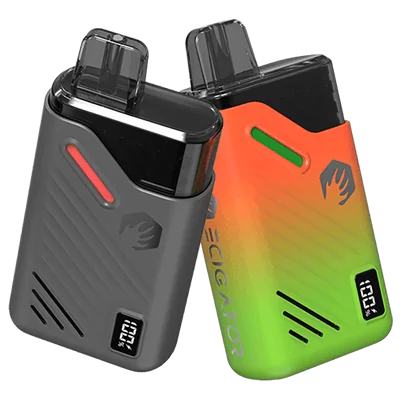
18K Disposable Pod Kit
Disposable Pod Kit – 18ml changeable pod with 650mAh rechargeable battery.
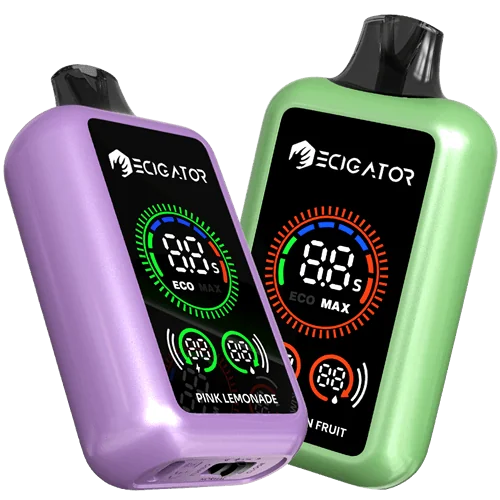
20K with Large Screen
20000 Puffs Disposable Vape with large screen. Normal and Boost working modes.
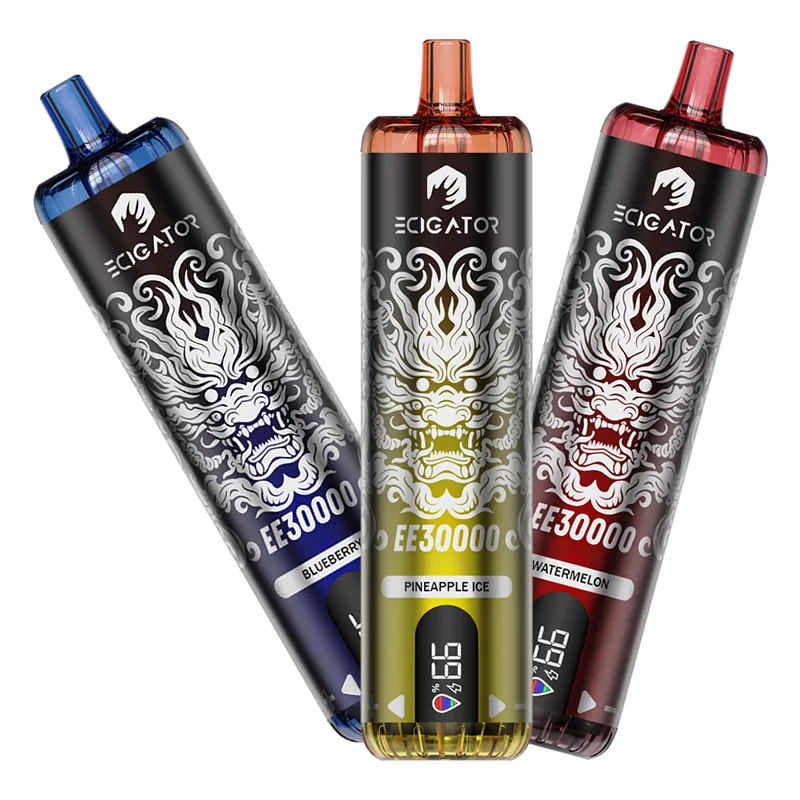
30K DTL Disposable
30K Puffs DTL(Directly to Lung) disposable vape with airflow control and screen.
How Federal Laws Impact Vaping in Alaska
Federal laws and FDA regulations significantly influence vaping in Alaska:
- FDA Regulatory Authority: The FDA has broad authority over the manufacture, marketing, and sale of all tobacco products, including ESDs. This includes requiring Premarket Tobacco Product Applications (PMTAs) for products to be legally marketed.
- Federal Tobacco 21 Law: This law mandates a national minimum sales age of 21 for all tobacco and nicotine products, overriding Alaska’s state possession age of 19 for sales.
- PACT Act: The Prevent All Cigarette Trafficking (PACT) Act regulates the mailing and shipping of cigarettes and smokeless tobacco, and its provisions have been extended to cover ESDs, impacting online sales and delivery.
- FDA Enforcement: The FDA conducts compliance checks and can take enforcement actions against manufacturers and retailers for violations, such as selling unauthorized products or marketing to youth.
Penalties for Non-Compliance in Alaska
Violations of Alaska’s vaping laws can lead to various penalties for both individuals and retailers. Enforcement is carried out by peace officers and authorized agents from the Department of Health and Social Services.
- For Individuals: Violating public use restrictions (e.g., vaping where prohibited) can result in civil penalties up to $300 (AS 18.35.390). Minors (under 19 by state law) caught possessing or using vaping products may face penalties such as fines, mandatory community service, and participation in tobacco education programs (Alaska Statute § 11.76.105).
- For Retailers: Selling to individuals under 21, failing to properly verify age, or violating other sales regulations can lead to significant fines, suspension or revocation of their license to sell tobacco and vaping products, and in some cases, criminal charges.
| Regulatory Aspect | Details | Key Statutes / Notes |
|---|---|---|
| Minimum Legal Sales Age | 21 years old (Federally mandated) | Federal Tobacco 21 Law |
| Minimum Legal Possession Age (State) | 19 years old | Alaska Statute § 11.76.105 |
| Public Indoor Vaping | Prohibited in most workplaces, public places, restaurants, and bars (treated as smoking) | Smokefree Alaska Law (AS 18.35.300 – 18.35.399) |
| Outdoor Vaping Restrictions | Prohibited within 20 feet of entrances/windows of smoke-free buildings, near playgrounds, etc. | Smokefree Alaska Law provisions |
| Retail Licensing | Required for selling vaping products. Annual fees (e.g., ~$1,000 for vape shops) apply. E-liquid mixers may be classified as manufacturers. | AS 43.70; 2025 Regulation Updates |
| ID Verification | Electronic ID verification mandated for sales to ensure compliance with age 21 minimum. | Retailer accountability measures |
| Vending Machines | Restricted to adult-only facilities where no one under 21 is permitted. | State regulations |
| Prohibition in Specific Locations | Banned in foster homes and in vehicles used for transporting children. | Alaska Admin. Code tit. 7, § 67.340 |
| Product Taxation | Currently no statewide excise tax on vaping products. Proposals (e.g., 25% wholesale tax) have been discussed in the legislature. | Ongoing legislative debate (e.g., past bills SB89, HB49) |
| Penalties for Minors | Possession/use by individuals under 19 can result in community service, educational programs. | Alaska Statute § 11.76.105 |
| Penalties for Retailers | Selling to underage individuals can lead to fines, license suspension/revocation, and potential criminal charges. | State enforcement actions |
Staying Informed & Future Outlook for Vaping in Alaska
Alaska’s vaping regulations are dynamic, with ongoing legislative efforts to address public health concerns, particularly youth vaping. Proposals for statewide vape taxes, nicotine content caps (like SB 24), and stricter online sales regulations (like SB 89) indicate a trend towards tighter control. The interplay between federal mandates and state autonomy will continue to shape the landscape. For the latest information, individuals and businesses should consult official state resources like the Alaska Department of Health and the Alaska State Legislature’s website for bill tracking.
This video from the Alaska Department of Health, “E-Cigarettes 101,” discusses the risks of youth vaping, a key concern underpinning many of Alaska’s vaping regulations.
Frequently Asked Questions (FAQs)
-
What is the legal age to buy vaping products in Alaska in 2025?
Due to federal law (Tobacco 21), the minimum legal age to purchase all tobacco products, including e-cigarettes and vaping products, is 21 years old in Alaska. While Alaska’s state law regarding possession is 19, retailers must comply with the federal sales age.
-
Are flavored vapes banned in Alaska?
As of early 2025, Alaska does not have a statewide ban on all flavored vaping products. However, federal law restricts flavors in pre-filled pod devices, and there are ongoing legislative efforts in Alaska to further restrict or ban flavored products to curb youth appeal.
-
Can I vape inside a bar or restaurant in Alaska?
No. Under the Smokefree Alaska Law, vaping is prohibited in most indoor public places, including bars, restaurants, and workplaces, just like traditional smoking.
-
Are vaping products taxed in Alaska?
As of early 2025, Alaska does not have a specific statewide excise tax on vaping products. However, some local municipalities (e.g., Juneau, Mat-Su Borough) have implemented their own local taxes, and there have been repeated legislative proposals to introduce a statewide vape tax.
-
What are the rules for selling vapes online to Alaska residents?
Online sales are subject to federal PACT Act requirements and age verification (21+). Proposed Alaska legislation (like SB 89) aims to further strengthen regulations for online vendors, including potential state registration and enhanced age verification for deliveries.
-
What is the proposed nicotine cap in Alaska?
Senate Bill 24, introduced for the 2025 session, proposes to cap nicotine concentration in vaping products at 50mg/ml.
- Is It Illegal to Vape or Smoke While Driving in the UK? - August 11, 2025
- Virginia Roanoke Considers $20,000 Annual Fee for Vape Shops - August 11, 2025
- Mississippi to Ban Unauthorized Vape Products in October - August 11, 2025

